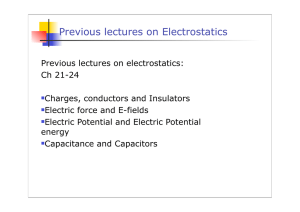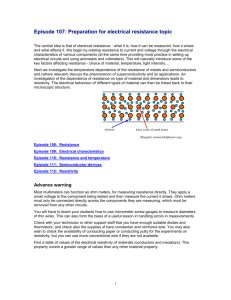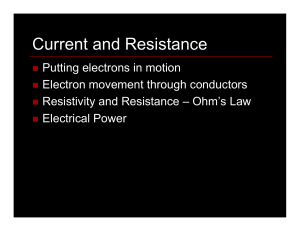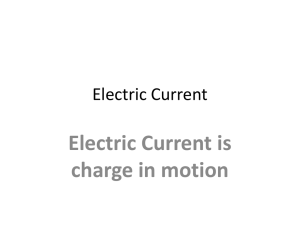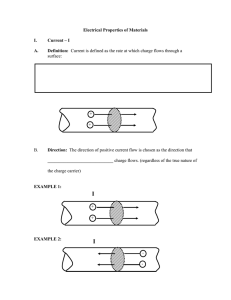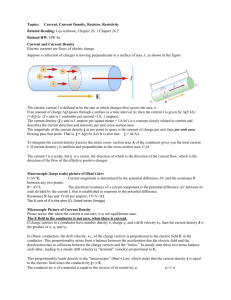Ch 26 Current and Resistance
advertisement
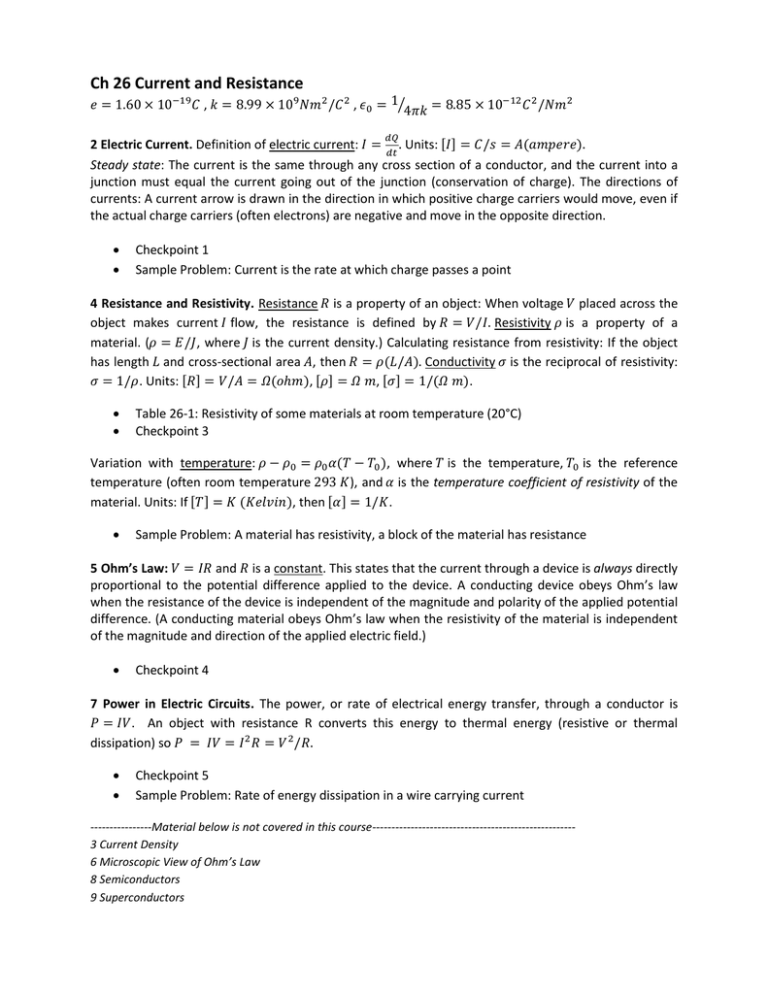
Ch 26 Current and Resistance , , ⁄ 2 Electric Current. Definition of electric current: Units: [ ] Steady state: The current is the same through any cross section of a conductor, and the current into a junction must equal the current going out of the junction (conservation of charge). The directions of currents: A current arrow is drawn in the direction in which positive charge carriers would move, even if the actual charge carriers (often electrons) are negative and move in the opposite direction. Checkpoint 1 Sample Problem: Current is the rate at which charge passes a point 4 Resistance and Resistivity. Resistance is a property of an object: When voltage placed across the object makes current flow, the resistance is defined by Resistivity is a property of a material. ( , where is the current density.) Calculating resistance from resistivity: If the object has length and cross-sectional area , then Conductivity is the reciprocal of resistivity: . Units: [ ] ,[ ] ,[ ] . Table 26-1: Resistivity of some materials at room temperature (20°C) Checkpoint 3 Variation with temperature: , where is the temperature, is the reference temperature (often room temperature ), and is the temperature coefficient of resistivity of the material. Units: If [ ] , then [ ] . Sample Problem: A material has resistivity, a block of the material has resistance 5 Ohm’s Law: and is a constant. This states that the current through a device is always directly proportional to the potential difference applied to the device. A conducting device obeys Ohm’s law when the resistance of the device is independent of the magnitude and polarity of the applied potential difference. (A conducting material obeys Ohm’s law when the resistivity of the material is independent of the magnitude and direction of the applied electric field.) Checkpoint 4 7 Power in Electric Circuits. The power, or rate of electrical energy transfer, through a conductor is . An object with resistance R converts this energy to thermal energy (resistive or thermal dissipation) so Checkpoint 5 Sample Problem: Rate of energy dissipation in a wire carrying current ----------------Material below is not covered in this course----------------------------------------------------3 Current Density 6 Microscopic View of Ohm’s Law 8 Semiconductors 9 Superconductors

